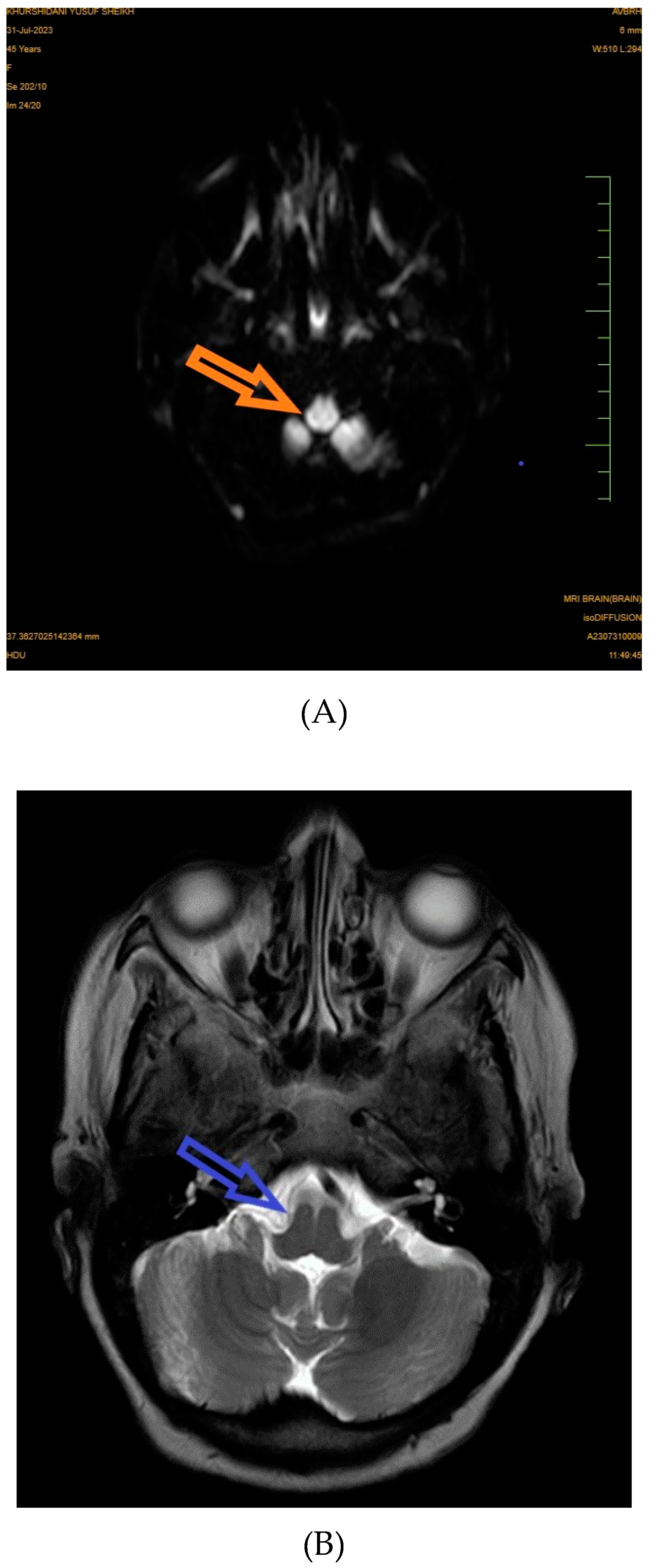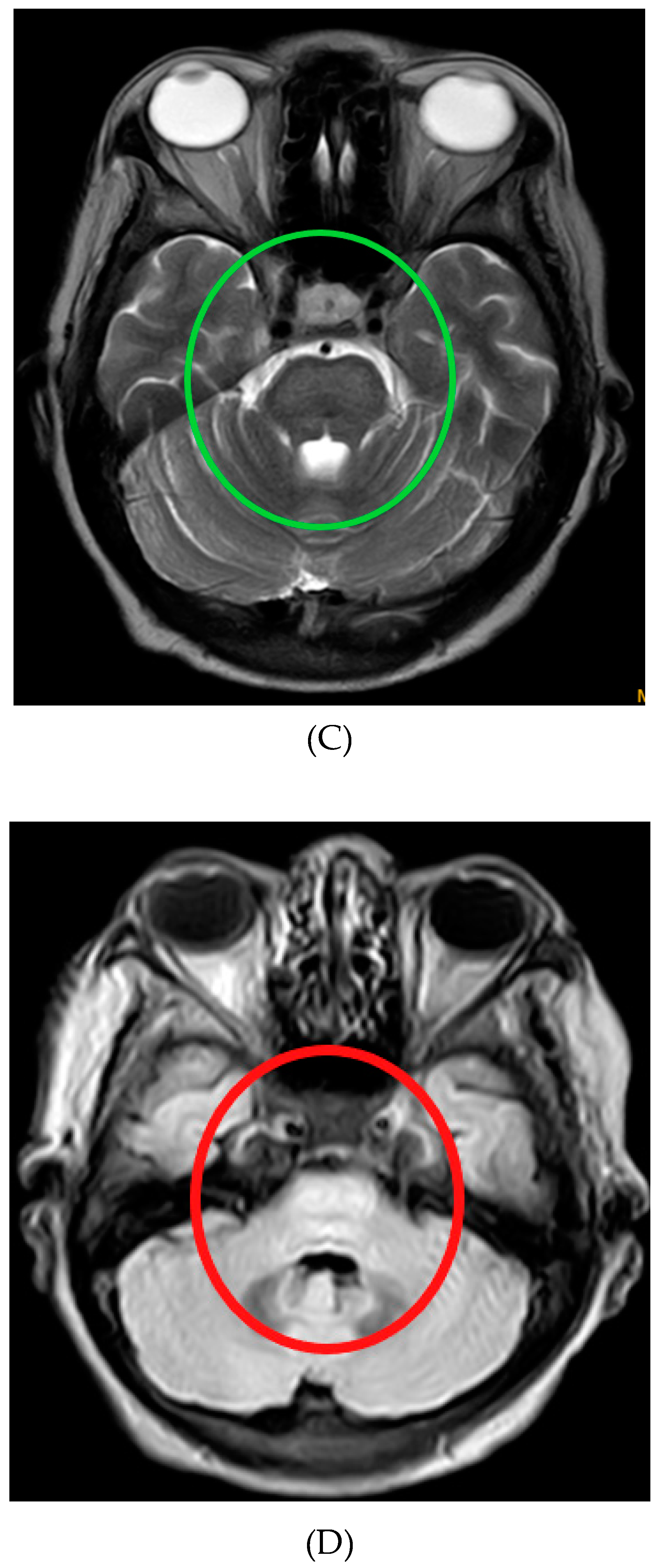Submitted:
31 August 2023
Posted:
05 September 2023
You are already at the latest version
Abstract
Keywords:


Author Contributions
Funding
Institutional Review Board Statement
Informed Consent Statement
Conflict of Interest
References
- Ruzek, K.A.; Campeau, N.G.; Miller, G.M. Early Diagnosis of Central Pontine Myelinolysis with Diffusion-Weighted Imaging. American Journal of Neuroradiology 2004, 25, 210–213. [Google Scholar] [PubMed]
- Miller, G.M.; Baker, H.L.; Okazaki, H.; Whisnant, J.P. Central Pontine Myelinolysis and Its Imitators: MR Findings. Radiology 1988, 168, 795–802. [Google Scholar] [CrossRef]
- Beh, S.C. Temporal Evolution of the Trident and Piglet Signs of Osmotic Demyelination Syndrome. Journal of the Neurological Sciences 2017, 373, 268–273. [Google Scholar] [CrossRef] [PubMed]
Disclaimer/Publisher’s Note: The statements, opinions and data contained in all publications are solely those of the individual author(s) and contributor(s) and not of MDPI and/or the editor(s). MDPI and/or the editor(s) disclaim responsibility for any injury to people or property resulting from any ideas, methods, instructions or products referred to in the content. |
© 2023 by the authors. Licensee MDPI, Basel, Switzerland. This article is an open access article distributed under the terms and conditions of the Creative Commons Attribution (CC BY) license (https://creativecommons.org/licenses/by/4.0/).




